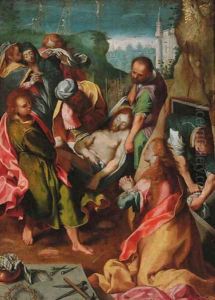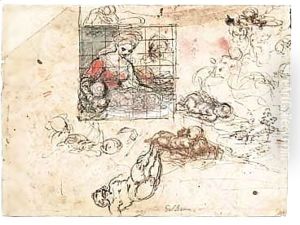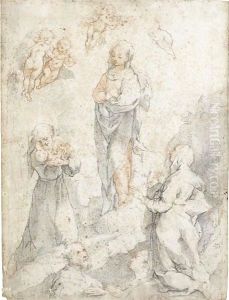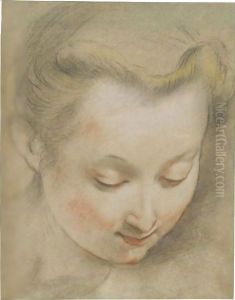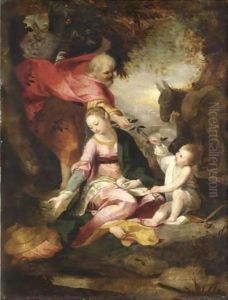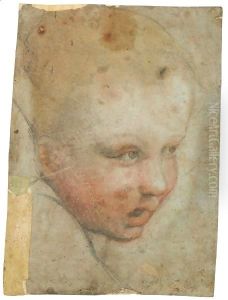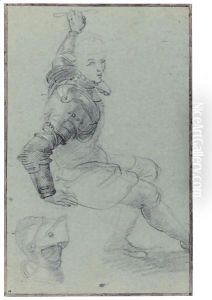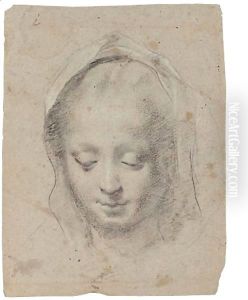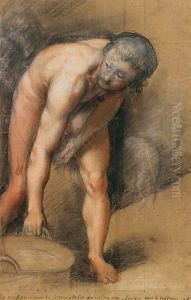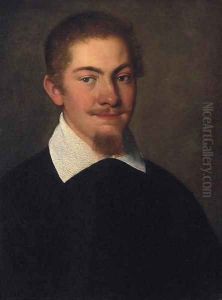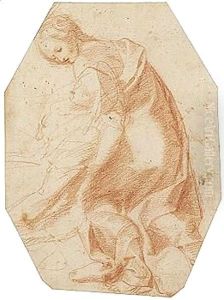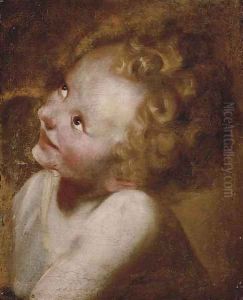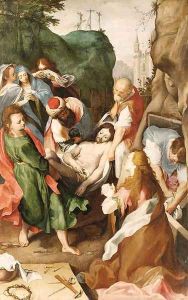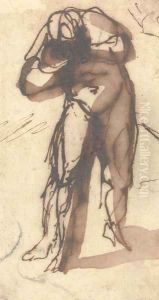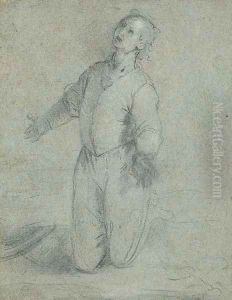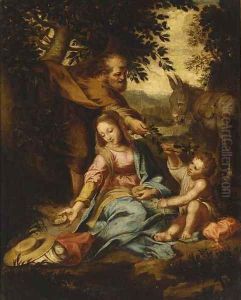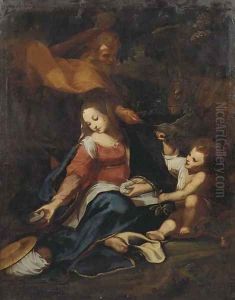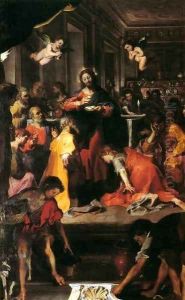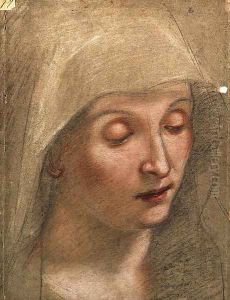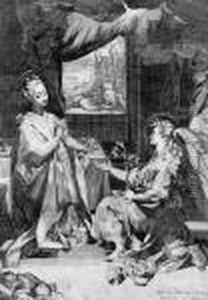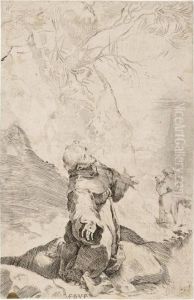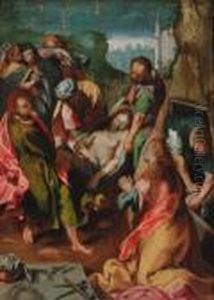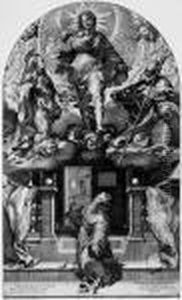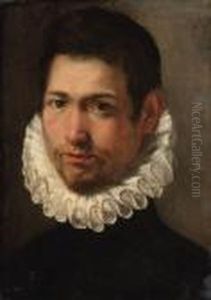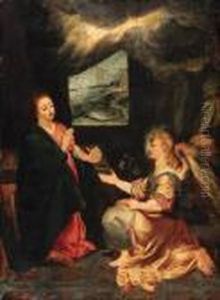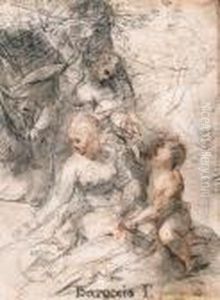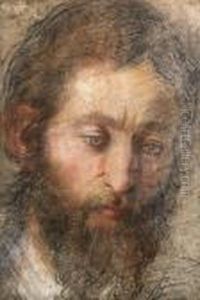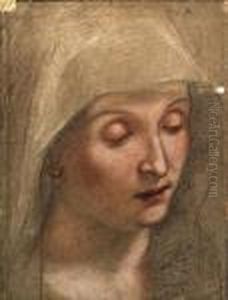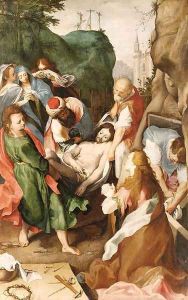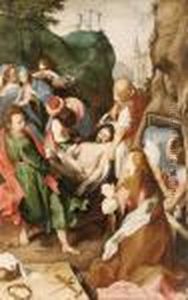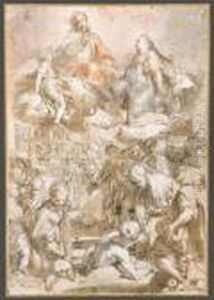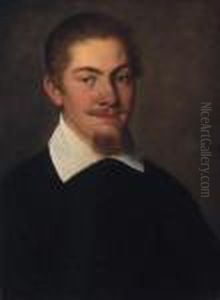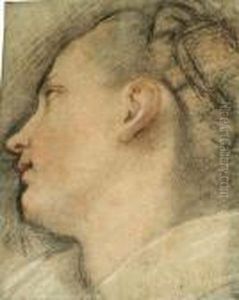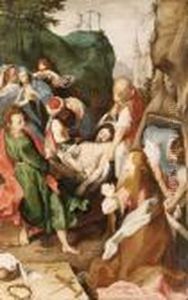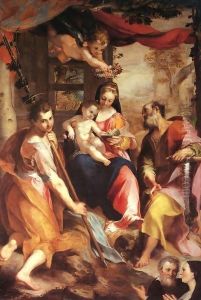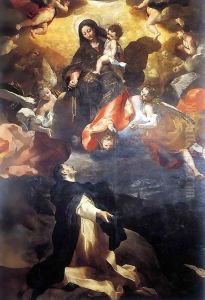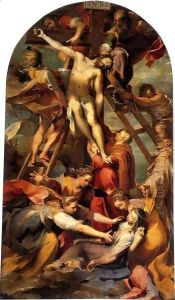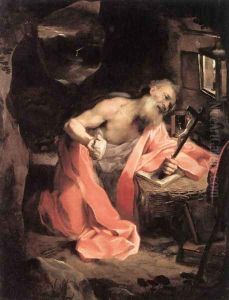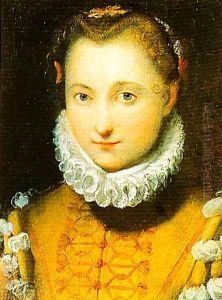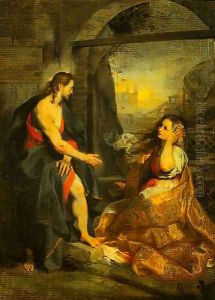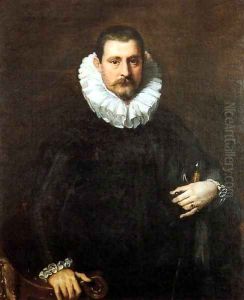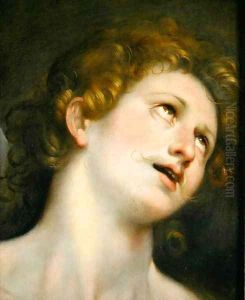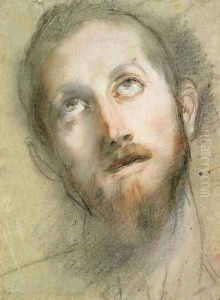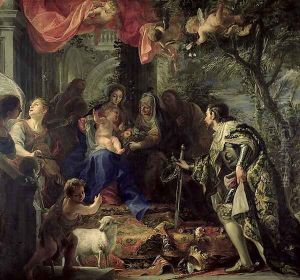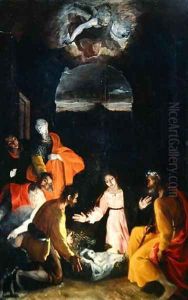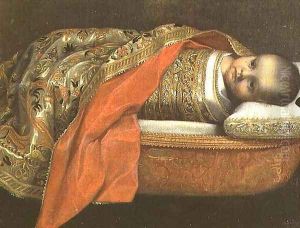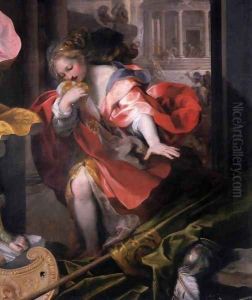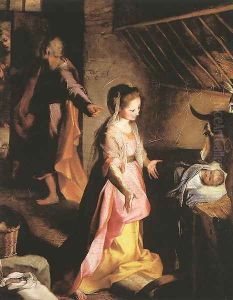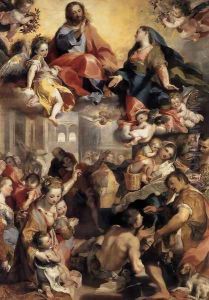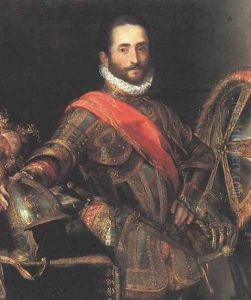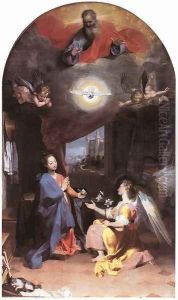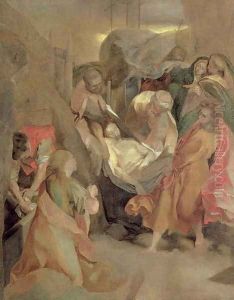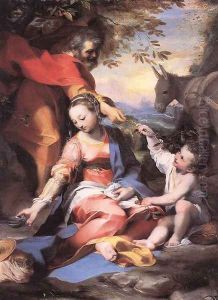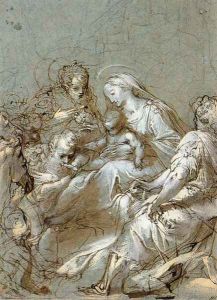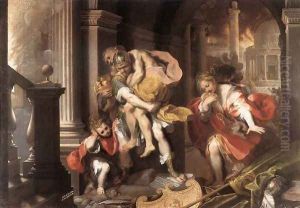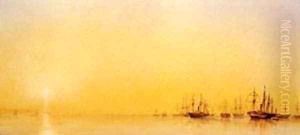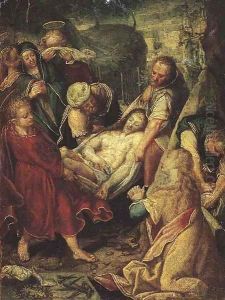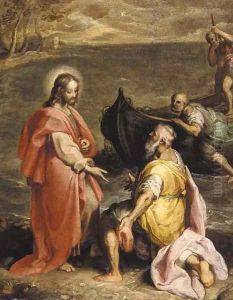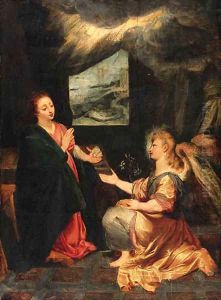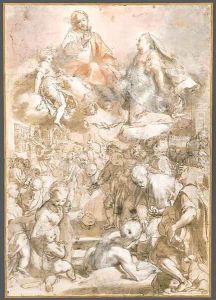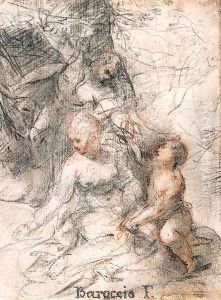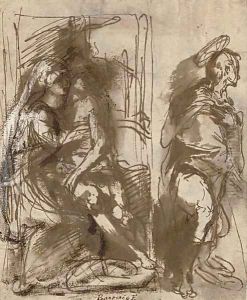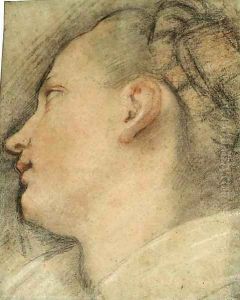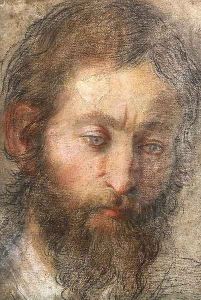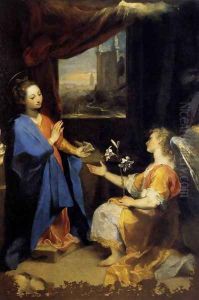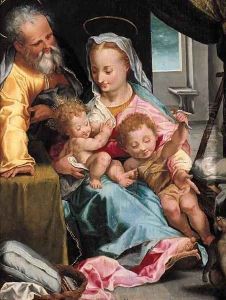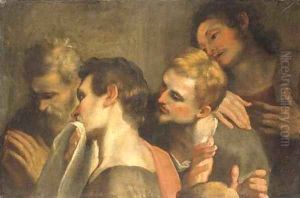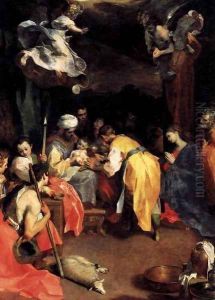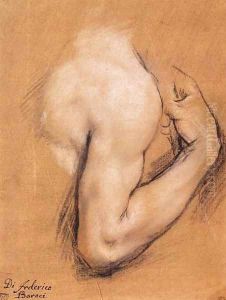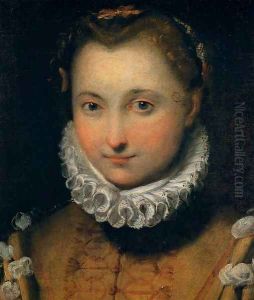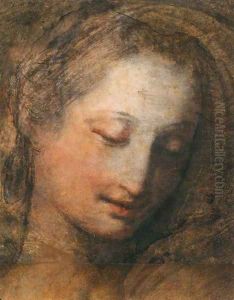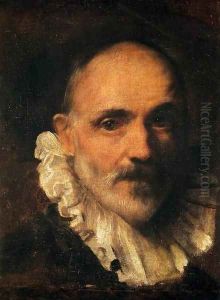Federico Fiori Barocci Paintings
Federico Fiori Barocci, also known simply as Federico Barocci, was an Italian Renaissance painter and printmaker celebrated for his vibrant colors, emotive compositions, and the integration of northern Italian and Flemish influences into his work. He was born in Urbino, Italy, in 1526, and he was active during a period that bridged the High Renaissance and early Baroque eras.
Barocci showed an early talent for art and was initially trained by his father Ambrogio, who was also a sculptor and architect. His family was well-connected in the artistic circles of Urbino, which allowed him to study with prominent artists of the day. His early work was influenced by the Mannerism of his time, characterized by artificiality and a certain elegance, which he later developed into a more naturalistic and emotive style.
He traveled to Rome in the early 1540s, where he was exposed to the works of Raphael and other Renaissance masters. This experience had a profound impact on his artistic development. He worked in Rome for a short period before returning to Urbino due to illness, which some speculate may have been caused by poisoning due to professional rivalry.
Back in Urbino, Barocci began to develop his distinctive style. He was renowned for his use of color and light, which brought a warmth and lifelike quality to his religious and mythological scenes. His compositions often featured dynamic movement and a dramatic use of perspective, which helped to engage the viewer emotionally. Barocci was also a pioneer in the use of pastels, which he used to great effect in his preparatory studies.
One of his most famous works is the 'Madonna del Popolo' (1575-1579), now housed in the Uffizi Gallery in Florence, which showcases his ability to infuse the divine with a sense of humanity and warmth. His altarpieces and devotional works were especially popular, and he received commissions from churches and patrons across Italy. Despite his success, Barocci chose to work primarily in Urbino and nearby towns, which limited his fame during his lifetime compared to artists who were active in larger cultural centers like Rome or Florence.
Barocci's influence extended into the early Baroque period, where his blend of realism and emotion can be seen in the work of artists such as Caravaggio and Annibale Carracci. Despite suffering from chronic health issues throughout his life, which often slowed his output, Barocci continued to paint until his death in 1612. His legacy is that of an artist who bridged the sensibilities of the Renaissance with the emerging Baroque style, and his works remain a testament to his innovative approach to color, composition, and emotion in art.
